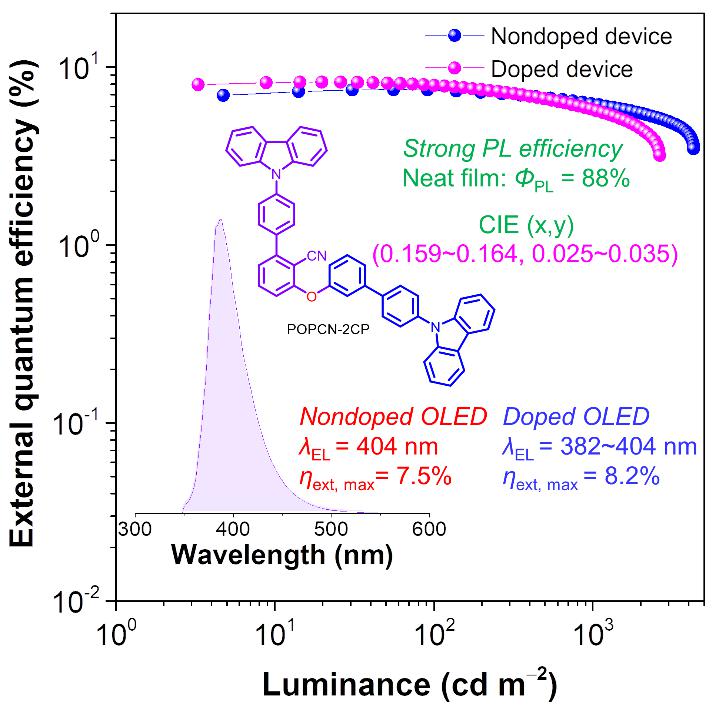
Near-ultraviolet organic light-emitting diodes (OLEDs) have the advantages of self-luminescence, full viewing angle, high contrast and flexible display, etc. and have very broad application prospects. Although red, green and blue OLEDs have been developing continuously and have made great achievements in the past ten years, the development of near-ultraviolet OLEDs is very slow, because the preparation of near-ultraviolet OLEDs requires near-ultraviolet organic light-emitting materials with wide band gaps. To achieve near-ultraviolet short-wavelength emission, the conjugation length of the molecule needs to be strictly controlled, however, this will lead to the weakening of the luminescence intensity of the molecule and the reduction of the carrier mobility. In addition, molecules with near-ultraviolet luminescence usually have small molecular weights, which is not conducive to the formation of uniform and stable solid-state thin films during the evaporation process, and also adversely affects device performance. Therefore, we designed a class of near-ultraviolet organic light-emitting materials. Through the rational connection of electron-donor carbazole and electron-acceptor phenylcyano and benzene bridges, near-ultraviolet organic molecules with high solid-state luminescence efficiency were synthesized, and the fluorescence quantum yield was as high as 88%, which is an ideal material for the preparation of efficient and stable near-ultraviolet OLED devices.
Ph. D. candidate Jinke Chen in our group is the first author of this article, and this work has been published on Angewandte Chemie International Edition (DOI: 10.1002/anie.202116810).
